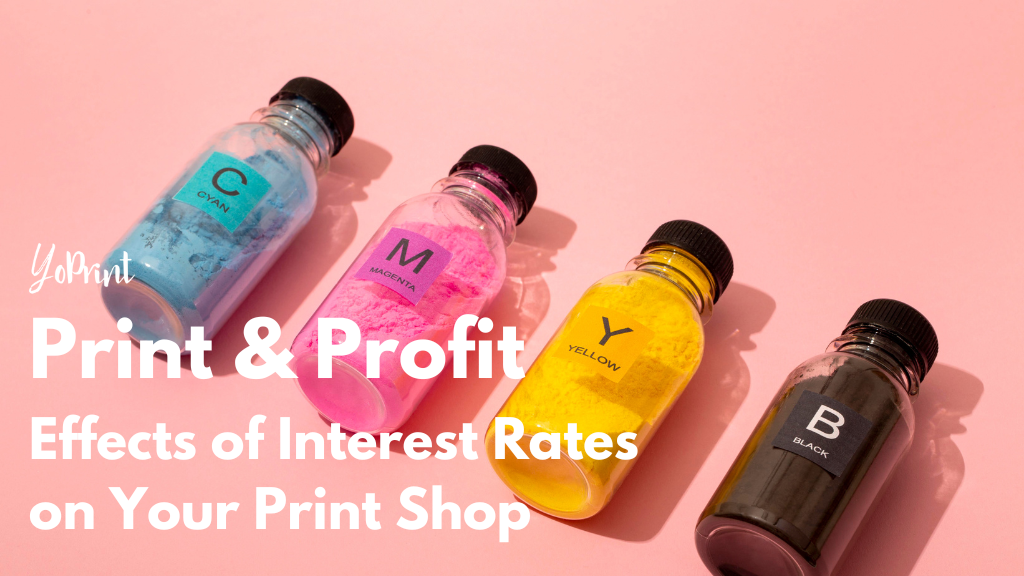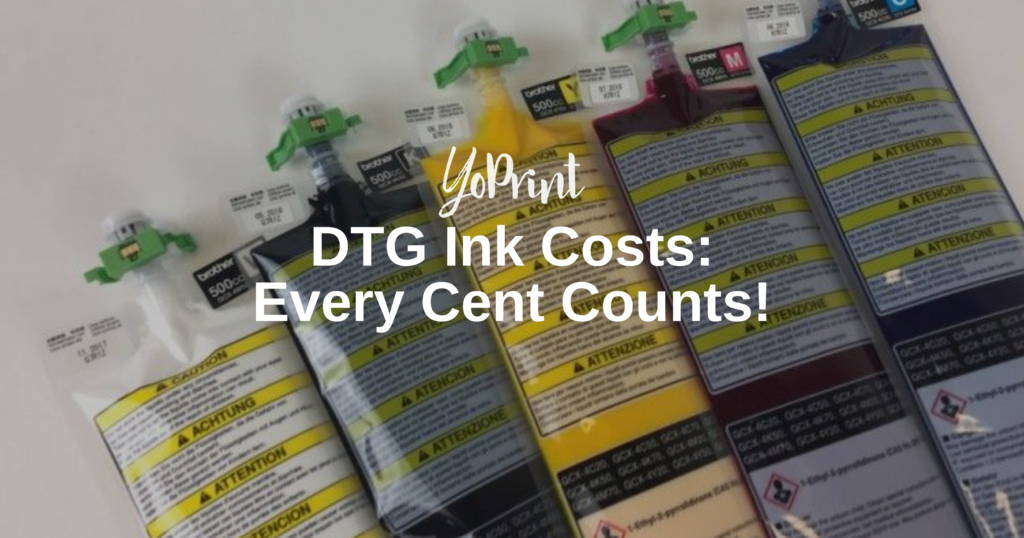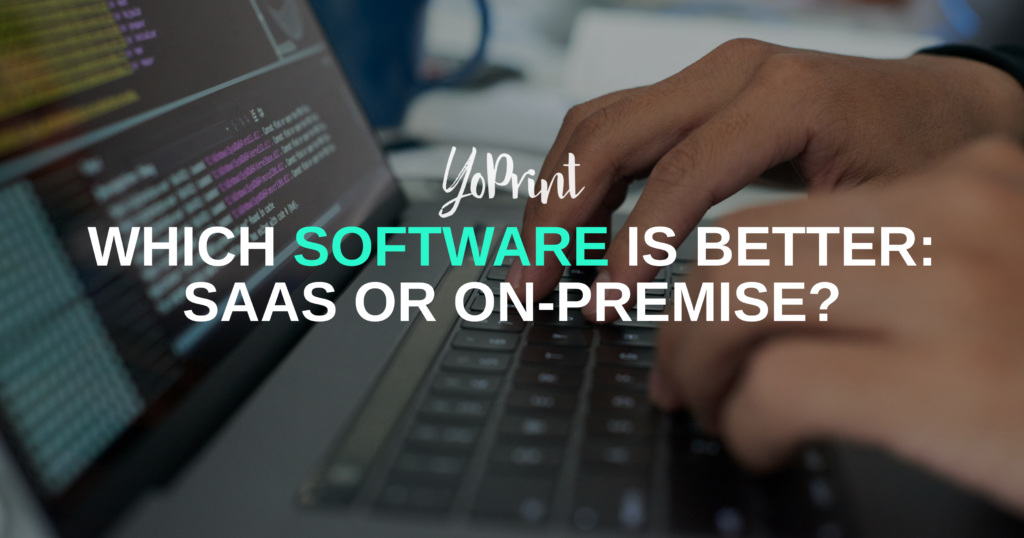Interest rates play a crucial role in the financial landscape, affecting various sectors of the economy, including small businesses like print shops. Understanding the effects of interest rates on your print shop is essential for effective financial management and decision-making. In this article, we will explore the impact of interest rates on your print shop operations, financing options, and strategies to mitigate the challenges that arise.
The rise and fall of interest rates, though as terrifying as it sounds, is not all bad. As the cost of borrowing money increases, rising interest rates can be beneficial for business.
KEYPOINTS
- Interest rates play a huge role in businesses whether you have bank debts or not
- The Fed determines interest rates to control the economy
- Interest Rate Risks will impact your business no matter what
- Print shops can take advantage of the tide and navigate through with proper business strategies
Understanding Interest Rates
- Interest rates refer to the cost of borrowing money. They are determined by the central banks or The Fed. One of its primary tools is setting the federal funds rate, which is the interest rate at which banks lend money to each other overnight.
- The interest rate set by the Fed influences many other interest rates in the economy, like those for mortgages, loans, and savings accounts. This, in turn, affects how much people and businesses spend, save, and invest.
- When the economy is slow or in a recession, or simply put: when businesses aren’t doing so well, people might be losing jobs, global pandemics, and the such – the Fed can lower interest rates.
- Lower interest rates make borrowing cheaper, encouraging businesses to invest and expand, and people to spend more – like buying houses or cars. This helps to stimulate economic growth.
- When the economy is strong and growing fast, there’s a risk of inflation. To control inflation, the Fed can raise interest rates. Higher interest rates make borrowing more expensive, which can slow down spending and investment, helping to keep prices stable.
Interest Rate Risks and Why It Is Important
- Interest rate risk is the risk that arises when the absolute level of interest rates fluctuates. Interest rate risk directly affects the values of fixed-income deposits. Since interest rates and bond prices are inversely related, the risk associated with a rise in interest rates causes bond prices to fall, and vice versa.
- Bond investors, specifically those who invest in long-term fixed-rate bonds, are more directly susceptible to interest rate risk.
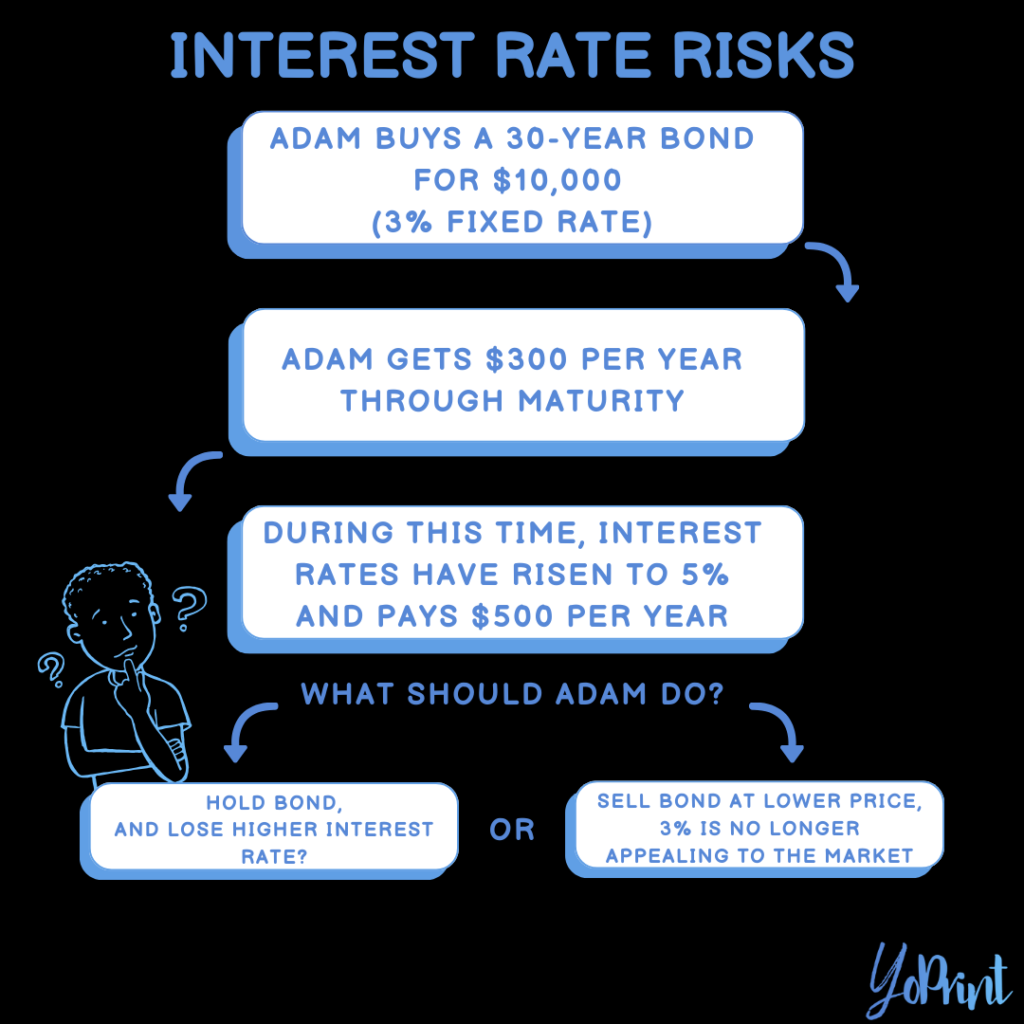
- Let’s put it this way: Suppose an individual purchases a 3% fixed-rate 30-year bond for $10,000. This bond pays $300 per year through maturity. If during this time, interest rates rise to 5%, new bonds issued pay $500 per year through maturity, assuming a $10,000 investment. If the 3% bondholder continues to hold their bond through maturity, they lose out on the opportunity to earn a higher interest rate.
- Alternatively, they could sell their 3% bond in the market and buy the bond with the higher interest rate; however, doing so results in the investor getting a lower price on their sale of 3% bonds as they are no longer as attractive to investors since the newly issued 5% bonds are also available.
- In contrast, changes in interest rates also affect equity investors but less directly than bond investors. This is because, for example, when interest rates rise, the corporation’s cost of borrowing money also increases.
- The idea of increasing interest rates when the economy is strong is not just about controlling inflation. It’s also about preparing for future economic downturns. By raising rates when times are good, the Fed ‘reloads’ its ‘firepower’. This means it has more room to lower rates again when the economy needs a boost. If rates are always low, there’s less room to cut them further in times of economic trouble.
The Impact of Interest Rate Risks on Print Shop Owners
- A change in interest rates will affect your business even if you don’t have loans.
- Purchasing power might be slow and can affect the demand for your print services, especially for non-essential or luxury items.
- However, trends in the past have shown that print will always be in demand. Especially during election year, business will be booming. So don’t worry just yet!
- As a print shop owner, understanding the financial constraints your customers may face can help you tailor your offerings and pricing if you see a slowdown.
- In 2024, The Fed is expecting to pause rate hikes, and market is looking to be more optimistic. The economic apocalypse is not coming anytime soon. However, do keep a close look on potential recession.
Effect on Financing Charges
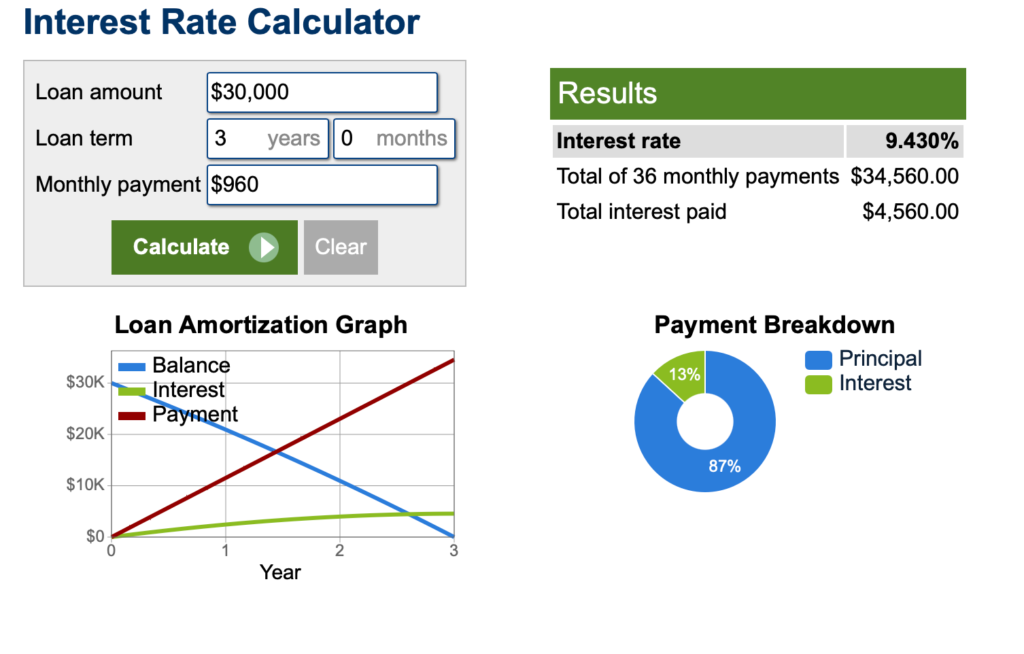
- Inevitably, high-interest rates result in borrowing being more expensive. Businesses, especially if you are a startup will require financing in order to grow.
- An increase in interest rates will generally mean that there is a reduction in bank lending because the risk of delinquencies will increase.
- America is currently facing a crushing credit card burden. The latest credit card APR has reached up to 30%, and that’s just mindblowing! If you save money on a sale, you’re about to pay it back in terms of interest.
- This pattern will lead to a hike in interest rates in the future. The Fed needs their firepower to stabilize the economy.
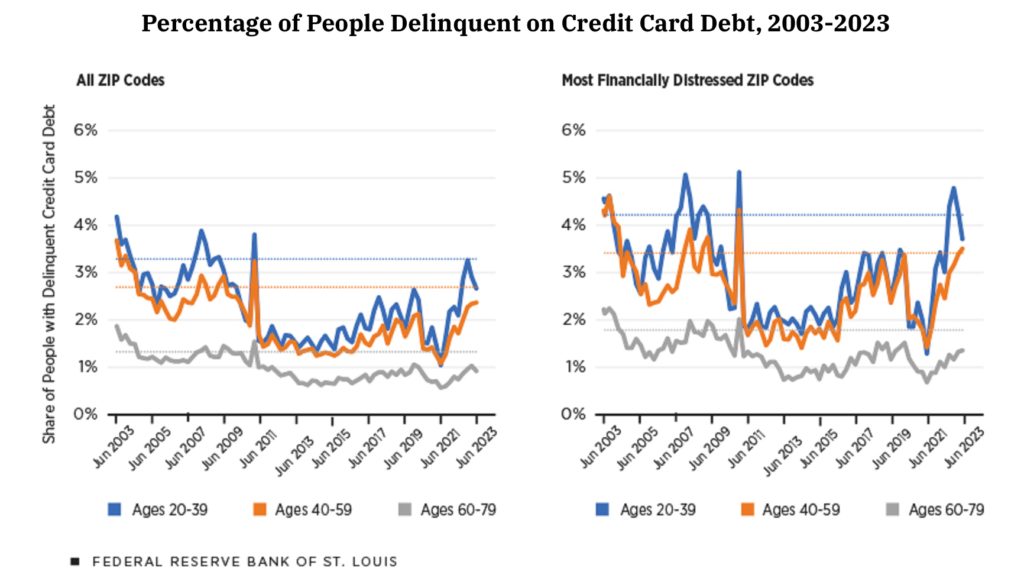
- Increased cost of borrowing makes it harder for small businesses to get off the ground and access the capital they need. As a print shop owner, this can directly impact your ability to access credit for various purposes, such as purchasing new equipment or expanding your operations.
- Even if you do get financing, with the crazy interest rates, at the end of the day, you’ll be paying more than you are borrowing!
- Fixed-rate loans can provide stability by locking in a set interest rate for a specific period of time. However, this also can have potential risks. After the specific time, rates can and will get readjusted, and it will be really high.
- According to SBA Loan Rates 2023, interest rates for small businesses can range from 8.5% to a whopping 15%. Let’s see how that can affect your financial planning in the long run.
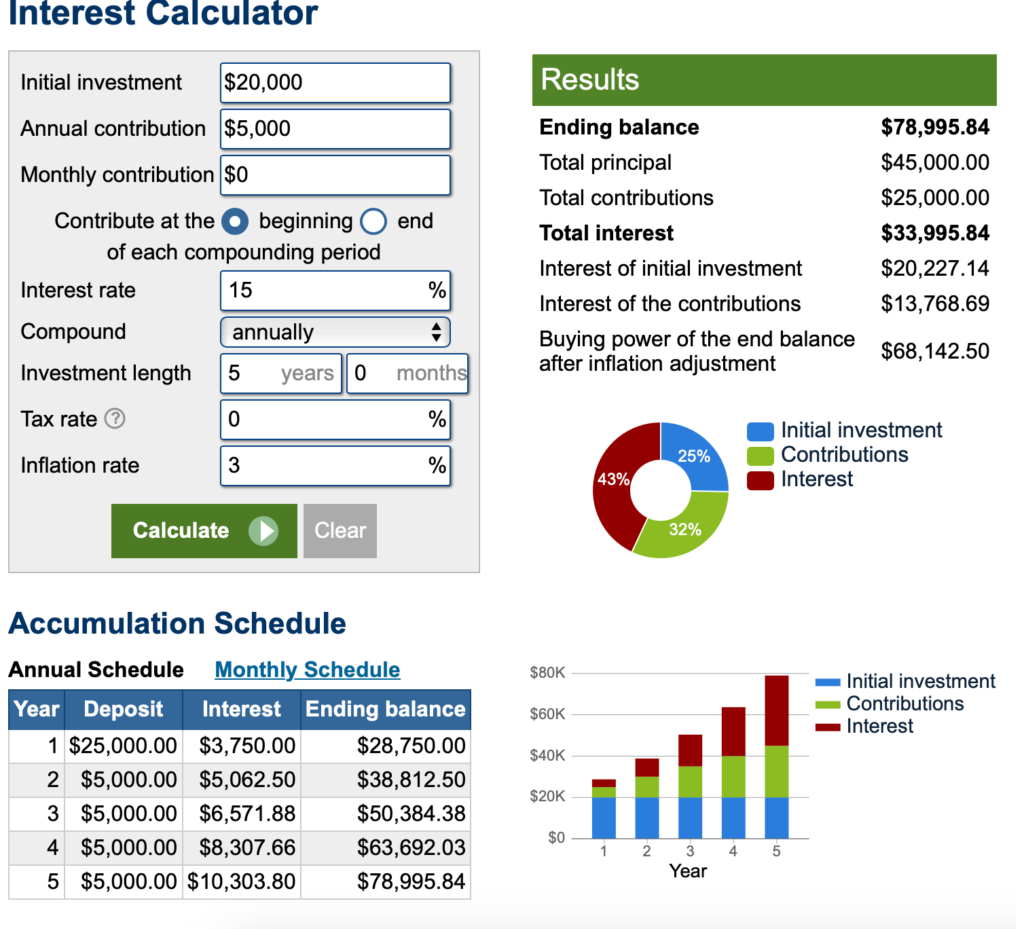
- With these kind of numbers, you will be working to pay off mortgages, loans and inevitably, more interest than what you actually borrowed. This often results in businesses having to increase their own prices accordingly in order to maintain the order of cashflow.
- Exploring alternative funding sources, such as venture capitalist schemes or government loans, can also provide additional financial support and help you in the long run.
For a printing shop, understanding and adapting to changes in interest rates is crucial for the financial health of your business. This involves managing debts wisely, making informed investment decisions, adjusting pricing strategies, and ensuring efficient operations by investing in the proper technology to remain competitive and profitable regardless of the interest rate environment.
Stay agile, adaptable, and customer-focused, and embrace opportunities to innovate and differentiate your print shop in this fluctuating and competitive market. By remaining proactive and strategic, you can navigate the ever-changing economic landscape and ensure the long-term success of your print shop.
